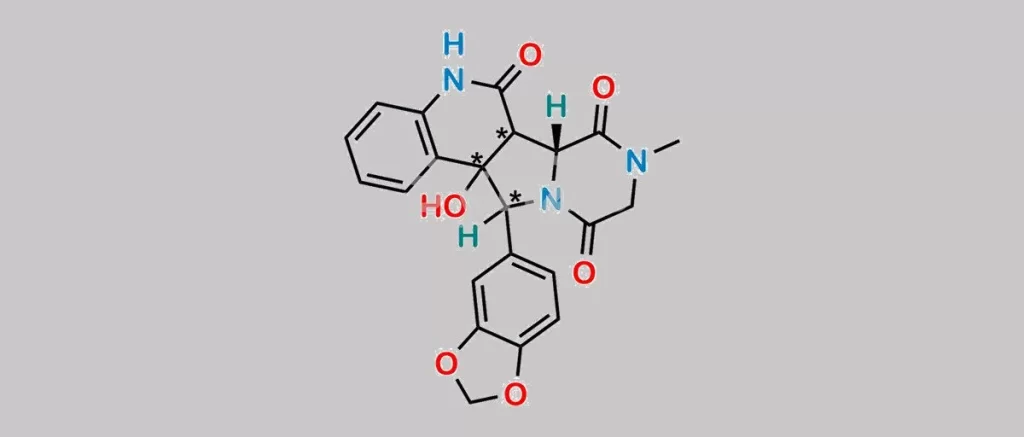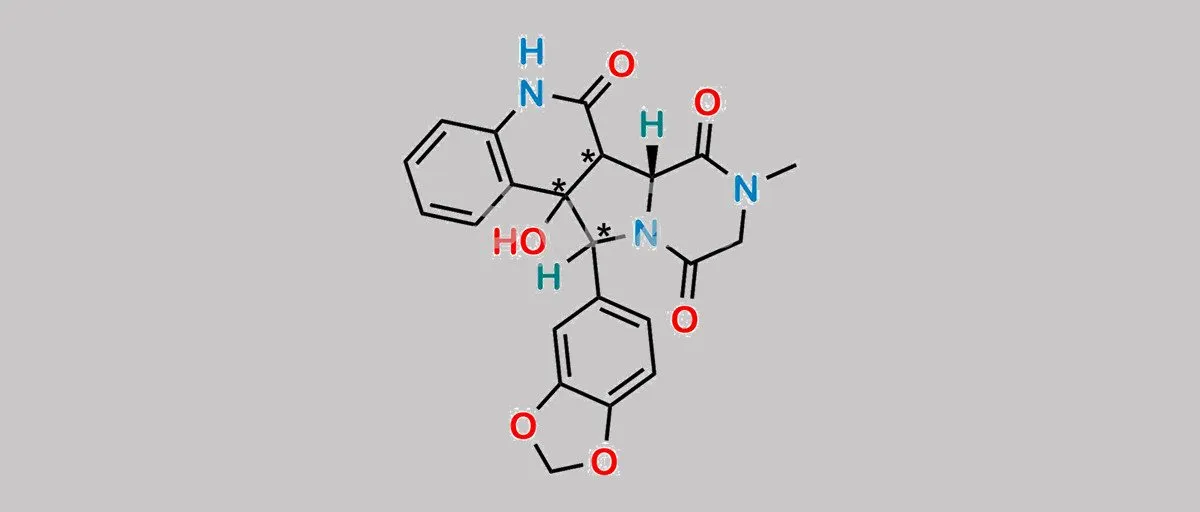この記事の概要
Tadalafil is a phosphodiesterase type 5 (PDE5) inhibitor, widely known by the brand name Cialis.It is used for the treatment of erectile dysfunction (ED) and also for the treatment of pulmonary hypertension.
Tadalafil is a phosphodiesterase type 5 (PDE5) inhibitor, widely known by the brand name Cialis. It is used for the treatment of erectile dysfunction (ED) and also for the treatment of pulmonary hypertension.

Molecular structure of tadalafil
The chemical name for tadalafil is 1,2,3,4-tetrahydro-β-carboline-6-carboxamide, and its official chemical formula is C₂₂H₁₉N₃O₄. This molecule has several characteristic chemical structures:
- β-Carboline ring
- It is a complex nitrogen-containing heterocycle that forms the core of tadalafil. This ring contributes to its biological activity and helps it interact with PDE5.
- Benzene ring
- It contains a benzene ring as part of the molecule, which enhances its fat solubility and aids in its absorption and metabolism in the body.
- Methoxy groups: Methoxy groups
- The methoxy group (-OCH₃) attached to the benzene ring affects the water solubility and biological activity of the molecule.
- Carboxamide group
- It functions as the active site of the molecule and plays an important role in the binding of tadalafil to the enzyme.
Molecular Mechanism of Action
Tadalafil inhibits the PDE5 enzyme from degrading cGMP (cyclic guanosine monophosphate). cGMP aids erection by promoting smooth muscle relaxation and increasing blood flow, especially to penile blood vessels. Inhibition of PDE5 by tadalafil increases cGMP levels and promotes stronger and more sustained erections only in the presence of sexual stimulation.
Due to this molecular structure and mechanism of action, tadalafil is known for its long-lasting effects, which can last up to 36 hours. This property is one of the main reasons that distinguish tadalafil from other similar drugs.











